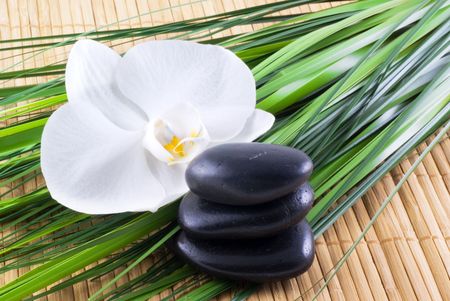Introduction to Herbal Traditions in Britain
Britain’s lush landscapes and shifting seasons have long nurtured a rich tradition of herbal medicine, deeply rooted in both folklore and practical healing. For centuries, native plants such as nettle, elderflower, and yarrow have been more than just features of the countryside; they were vital resources for communities seeking remedies from nature’s pharmacy. Before the rise of modern pharmaceuticals, local wise women and herbalists—often known as “cunning folk”—passed down their knowledge through generations, blending empirical wisdom with a touch of mysticism. These early practitioners laid the groundwork for what we now recognise as naturopathic practices, focusing on balance, prevention, and the intrinsic connection between people and their environment. Today, this heritage still resonates across the UK, inspiring a renewed interest in traditional healing methods that honour both history and holistic wellbeing.
2. Celebrated Native British Plants and Their Uses
Britain’s countryside is home to a rich variety of native plants, many of which have been woven into the fabric of traditional healing practices for centuries. Today, these herbs are finding renewed relevance in modern naturopathic approaches, offering gentle and effective support for daily wellbeing. Let’s take a closer look at some of the most celebrated local herbs: nettle, elderflower, dandelion, yarrow, and chamomile—each cherished for their unique properties both in the past and present.
Nettle (Urtica dioica)
Once feared for its sting but valued by herbalists, nettle is a nutritional powerhouse, traditionally used as a spring tonic to “wake up” the system after winter. In contemporary practice, it’s appreciated for its rich mineral content and is commonly brewed as a tea to support vitality.
Elderflower (Sambucus nigra)
The delicate blooms of elderflower have graced British hedgerows for generations. Traditionally infused into cordials or teas, elderflower is renowned for supporting the immune system and soothing seasonal discomforts. Its subtle floral notes are still enjoyed today in everything from herbal remedies to refreshing summer drinks.
Dandelion (Taraxacum officinale)
Often dismissed as a weed, dandelion has deep roots in folk medicine. Both leaf and root have been used to promote digestive health and gently support detoxification. Modern herbalists continue this tradition, turning to dandelion infusions or salads as part of a balanced lifestyle.
Yarrow (Achillea millefolium)
Yarrow’s feathery leaves and clusters of white flowers are a familiar sight across meadows and verges. Traditionally used for wound care and balancing the body, it is now prized by naturopaths for its role in supporting healthy circulation and resilience against everyday stresses.
Chamomile (Matricaria chamomilla/Chamaemelum nobile)
This gentle herb has long been a staple in British home remedies, treasured for its calming effects. Whether sipped as a soothing bedtime tea or applied topically to ease skin irritation, chamomile remains a favourite for promoting relaxation and balance.
Traditional & Contemporary Uses at a Glance
| Herb | Traditional Use | Modern Naturopathic Application |
|---|---|---|
| Nettle | Spring tonic; mineral boost | Nutrient-rich tea; supports energy |
| Elderflower | Immune support; fevers | Cordial; immune modulator |
| Dandelion | Liver & digestion support | Detox tea; digestive aid |
| Yarrow | Wound care; circulation booster | Circulation support; stress resilience |
| Chamomile | Calming remedy; sleep aid | Anxiety relief; skin care |
The enduring presence of these native herbs in both traditional lore and modern wellness routines speaks to their versatility and value. By embracing these plants, we connect with Britain’s natural rhythms—supporting our health in tune with the land itself.
![]()
3. Folk Wisdom Meets Modern Naturopathy
The British countryside has long been a living pharmacy, with local communities relying on native plants for everyday ailments. Today, the wisdom passed down through generations is finding renewed relevance as modern naturopaths integrate these time-honoured remedies into contemporary practice. British healers now blend ancestral knowledge—such as using elderberry for immune support or nettle for vitality—with up-to-date scientific understanding and holistic assessment. This union of folk tradition and evidence-based care ensures that natural therapies are both safe and effective, while remaining deeply rooted in the local landscape. Community workshops, practitioner-led walks, and collaborative projects have become popular across the UK, offering opportunities to reconnect with forgotten plant lore. In this way, the British naturopathic community honours its heritage while adapting it for today’s health challenges, fostering a sense of continuity and belonging.
4. Sourcing and Foraging Ethically in the UK
Embracing herbal traditions in Britain goes hand in hand with a deep respect for the land, its rhythms, and the delicate balance of native ecosystems. Whether you are gathering wild herbs on a country walk or sourcing them from local suppliers, ethical foraging is not only about sustainability—it’s also a commitment to safeguarding the future of our natural heritage.
Guidelines for Safe and Sustainable Foraging
Before you set out with your basket and field guide, it’s essential to familiarise yourself with the Countryside Code—a set of guidelines designed to protect both people and wildlife. Adhering to these principles ensures that wild plants can continue to thrive for generations. Key points include:
| Countryside Code Principle | Practical Application |
|---|---|
| Respect wildlife and habitats | Avoid disturbing nesting birds, rare plants, or sensitive areas; pick only what you need. |
| Leave no trace | Take all litter home and avoid trampling fragile vegetation. |
| Seek permission where necessary | Always obtain landowner consent if foraging on private property. |
| Harvest responsibly | Never uproot whole plants; take only leaves, flowers, or fruit in moderation. |
Sourcing Native Herbs Locally
If you prefer purchasing over wild-gathering, opt for local growers or ethical herbalists who prioritise organic methods and transparency. Farmers’ markets, community apothecaries, and reputable online shops often offer British-grown herbs. Look for certifications such as Soil Association Organic or memberships with The National Institute of Medical Herbalists (NIMH) as assurance of quality and sustainability.
Top Tips for Responsible Herb Gathering
- ID with confidence: Misidentification can be harmful—always use a reliable guide or consult an expert before harvesting any plant.
- Pace your picking: Only gather small amounts from abundant populations, leaving plenty for wildlife and regeneration.
- Mind the seasons: Harvest at the correct time for each species to ensure potency and ongoing health of the plant population.
- Avoid protected species: Some native British plants are legally protected—never forage these.
Nurturing Balance Between Tradition and Conservation
By sourcing and gathering herbs thoughtfully, we honour not just ancient wisdom but also our responsibility as stewards of Britain’s countryside. Ethical choices ensure that modern naturopathic healing remains rooted in respect—for both people and the land itself.
5. Integrating Local Herbs into Everyday Wellbeing
Incorporating British native herbs into daily routines is a gentle and grounding way to nurture both body and mind. Drawing inspiration from age-old local customs, you can easily weave these plants into self-care rituals that fit the rhythm of modern living. One simple method is to begin your morning with a cup of herbal tea—infusions of nettle, elderflower, or chamomile are traditional favourites, each offering its own subtle support for vitality and calm.
Teas and Tonics: A Daily Pause
Brewing herbal teas is more than just a health practice; it’s a moment to pause and reconnect with yourself. Gather dried or fresh herbs such as mint or lemon balm from your garden or local hedgerows, steep them in hot water, and savour the soothing aromas. These teas not only refresh but also offer gentle support for digestion and relaxation.
Herbal Baths and Compresses
For physical ease at the end of a busy day, consider adding handfuls of lavender or calendula to your bathwater. This age-old remedy, popular in many British households, helps relax muscles and calm the senses. Similarly, a warm compress made from infused rosemary or thyme can be applied to tired joints—a practical tip borrowed from generations past.
Culinary Wellness: Adding Herbs to Meals
Embracing native herbs in your cooking is another mindful way to support wellbeing. Sprinkle chopped parsley or chives onto soups and salads for a burst of flavour and nutrients. Not only do these herbs elevate taste, they also carry traditional associations with resilience and renewal.
Cherishing Tradition in Modern Life
By integrating local plants into everyday self-care, you honour both British botanical heritage and your own wellbeing. Whether through herbal teas, soothing baths, or nourishing meals, these small rituals help create balance—rooting you in tradition while supporting a more mindful lifestyle.
6. Challenges and Future Directions
As we continue to rediscover the value of native British plants in modern naturopathic healing, there are important challenges and opportunities ahead. Regulation remains a central concern; while herbal remedies have deep roots in British tradition, ensuring quality and safety in today’s market is no small feat. The UK has made significant strides with standards and guidelines for herbal practitioners, yet maintaining a balance between access and oversight is an ongoing dialogue among healthcare professionals, regulators, and the public.
Conservation is another pressing issue. Many native species—such as meadowsweet, elderflower, and nettle—face threats from habitat loss, climate change, and unsustainable harvesting practices. Responsible foraging, cultivation initiatives, and community education are essential if we are to protect these resources for future generations. Conservation groups across Britain are working tirelessly to safeguard wild plant populations, often collaborating with local communities and schools to foster a culture of stewardship.
The mission to preserve native plant knowledge is equally vital in this modern context. Traditional wisdom, once passed down through families and local healers, risks being lost amidst the fast pace of contemporary life. Thankfully, there is renewed interest in recording oral histories, supporting apprenticeships with experienced herbalists, and integrating ethnobotanical studies into academic curricula. Local workshops and festivals—from Sussex to the Scottish Highlands—play a key role in revitalising community engagement with Britain’s botanical heritage.
Looking forward, the future of British herbalism will depend on our ability to bridge tradition with innovation. Digital platforms offer promising ways to share reliable information about native plants while connecting practitioners and enthusiasts across the country. At the same time, research into the efficacy and applications of British herbs continues to grow, promising new insights that respect both scientific rigour and ancestral knowledge.
Ultimately, nurturing a harmonious relationship with our land and its plants invites us to slow down and reconnect—with nature, our history, and each other. In doing so, we can ensure that the rich heritage of British herbal tradition not only survives but thrives in the heart of modern naturopathic healing.


